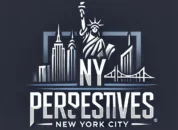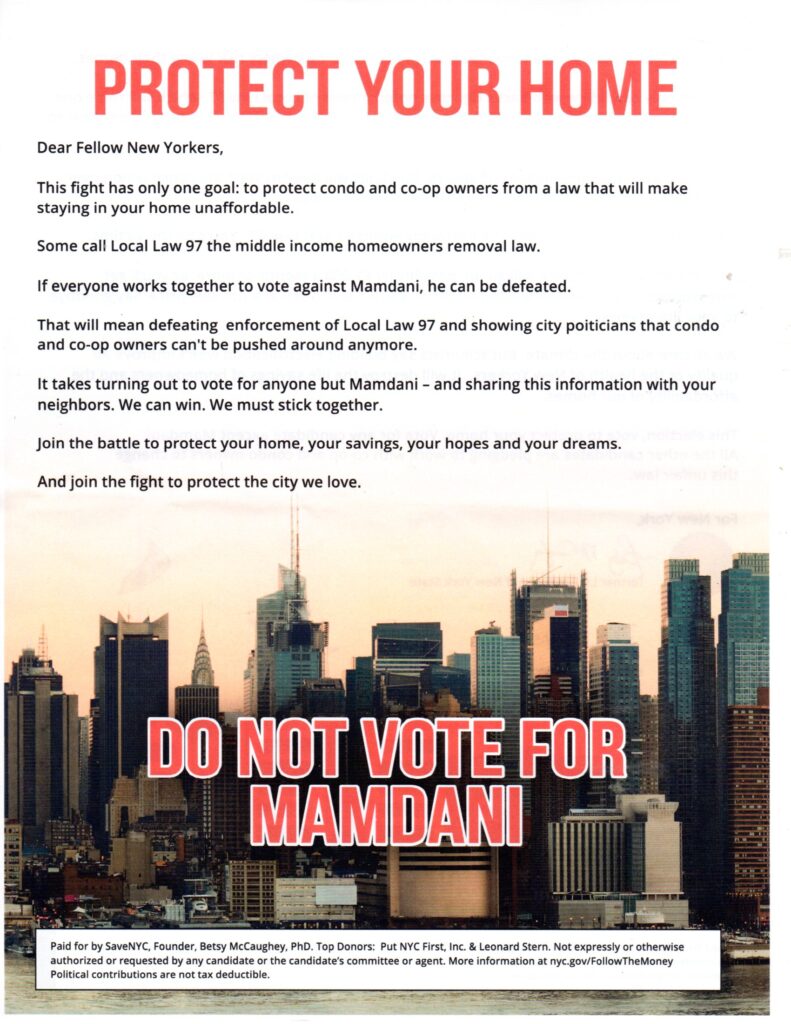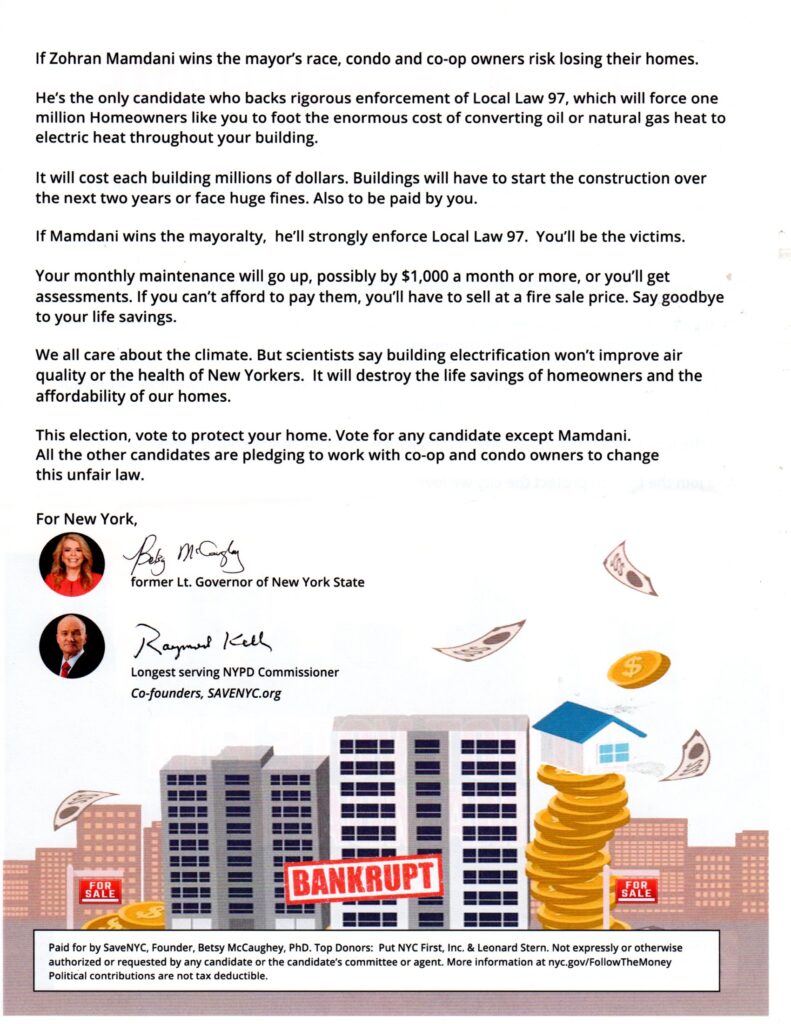PROTECT YOUR HOME
Why the upcoming Elections matter
Landlords, tenants, Condo, and Coop owners beware.
New York, October 15, 2025
Quietly over the past decade, Politicians have passed laws without citizens acknowledging what the legislation was or even if it existed in the first place. It has reached the point where all legislation comes to light, and the citizens of this city MUST be informed of such changes. We have become a one-party state due to such insidious acts, with no referendums proposed, leaving citizens unaware of what is happening.
And it will hit our wallets substantially in the coming decade.
One such law being “mandated” is Local Law 97, which has been on the books for five years, progressing slowly and quietly, and is about to hit the citizenry of NY with a financial wallop never before seen.
WHAT IS LOCAL LAW 97?
New York City Local Law 97 (LL97) is a landmark climate legislation enacted in 2019 as part of the city’s broader Climate Mobilization Act. It is considered one of the most ambitious building emissions laws in the world, targeting the city’s largest source of greenhouse gas (GHG) emissions—buildings, which account for over two-thirds of NYC’s total emissions.
Key Features of Local Law 97
1. Who Must Comply
- Buildings over 25,000 square feet.
- Two or more buildings on the same tax lot totaling over 50,000 square feet.
- Multiple buildings under the same condominium board exceeding 50,000 square feet.
2. Emissions Limits
- Buildings must stay below specific carbon emissions thresholds, which vary based on building type and use.
- These limits begin in 2024 and become progressively stricter in 2030, 2035, and 2050, with the aim of achieving net-zero emissions by 2050.
3. Reporting Requirements
- Starting May 1, 2025, building owners must submit annual GHG emissions reports certified by a registered design professional.
- Reports are submitted via the BEAM portal and must use data from EPA’s ENERGY STAR Portfolio Manager.
4. Compliance Pathways
- Article 320: Applies to most private buildings.
- Article 321: Offers a prescriptive path for certain buildings, like affordable housing and religious institutions, requiring specific energy conservation measures instead of emissions caps.
5. Penalties for Non-Compliance
- $268 per metric ton of CO₂e over the emissions limit.
- $0.50 per square foot per month for late report submissions.
- Up to $500,000 in fines and potential jail time for false reporting.
6. Support and Flexibility
- Buildings may demonstrate “good faith efforts” through decarbonization plans or electrification upgrades.
- Financial assistance and technical support are available through city and state programs.
- Basic Eligibility Criteria
- A building is covered by LL97 if it meets any of the following:
- Single building over 25,000 gross square feet.
- Two or more buildings on the same tax lot totaling over 50,000 gross square feet.
- Two or more condo buildings governed by the same board totaling over 50,000 gross square feet.
More on LL 97:


